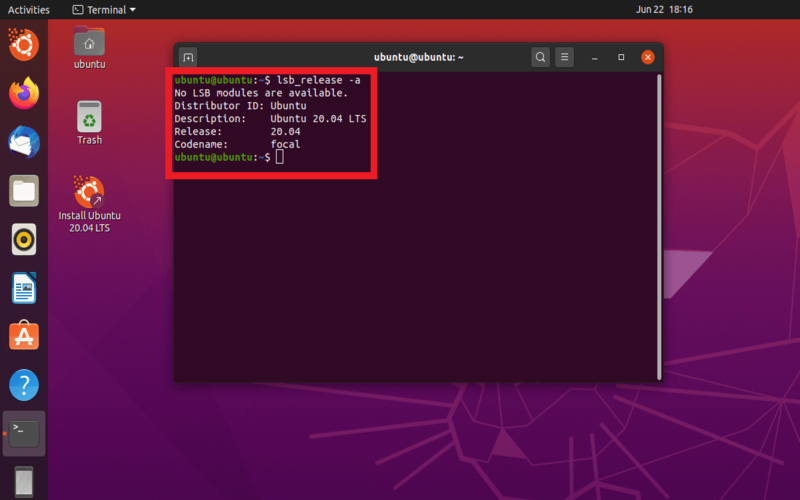Protecting data is extremely important for any Linux system, as it guarantees the security and accessibility of files and directories. It is vital to have strategies to prevent data loss or corruption. Here are 20 strategies specifically designed for Linux systems that can effectively safeguard your data.
1. Regular Backup
Regularly backing up files and directories to a hard drive or network storage device is one of the simplest yet highly effective backup strategies. It ensures that even if your system fails, you can still restore your files from the backup.

2. Snapshots
Snapshots provide an efficient way to capture the complete state of the file system at a specific moment. This capability is for various scenarios, particularly backup and recovery operations. By taking advantage of snapshots, users can create backups without disrupting the ongoing operations of the file system. Since snapshots capture the state of the file system at a specific time, they allow for consistent backups that include all the files and data as they existed.

3. Differential And Incremental Backups
When performing backups every time, you can opt for differential or incremental backups. These strategies only copy changed files since the backup, reducing storage requirements and backup time.

4. Scheduled Backup Process
Setting up a scheduled backup process automates backups at regular intervals, ensuring consistency and reducing the risk of data loss. It saves time and effort while protecting your important files and data from accidents or system failures. It eliminates any risk of forgetting to back up data.

5. Linux Backup Software
Linux backup software and tools, like rsync or tar, are specially designed for Linux systems. They offer features and customization options that greatly enhance the efficiency and effectiveness of the process.

6. Bare Metal Backup
A bare metal backup refers to backing up the entire system, including the configuration and installed software, allowing for a complete system restore. This type of backup is valuable in failures or system migrations, providing the ability to restore the system to its previous state.

7. Off-site Storage
Saving backups on a platform offers the advantage of off-site storage, ensuring that data remains accessible even if there is damage to the local system. Cloud backups also provide a layer of protection against disasters. Allow for easy access to data from anywhere.

8. RAID Technology
RAID technology helps protect against data loss by mirroring or stripping data across drives, providing redundancy and fault tolerance. The RAID system distributes data across multiple drives, ensuring that if one drive fails, the data is still accessible from the remaining drives. This redundancy provides a higher level of fault tolerance and minimizes the risk of data loss. RAID can also improve read and write performance by allowing data to be read or written to multiple drives.

9. Disk Imaging
Creating disk images of the system enables easy restoration in case of failure. This copy, or image, can be stored as a backup to restore the system to a previous state, including all installed software, user profiles, and data. It makes disk imaging ideal for disaster recovery scenarios, where a system failure or data loss could result in significant downtime or data loss. With disk imaging, systems, and data can be rapidly and accurately restored to a known state, minimizing downtime and ensuring business continuity.

10. Media Storage
Using media storage like DVDs or tape drives provides a long-term backup solution. Storing backups on media ensures data integrity and safeguards against electronic failures.

11. Encryption
Encryption is a coded language that only authorized parties can access. In the event of a breach, an encrypted backup will prevent attackers from accessing sensitive data, as they will not have the necessary decryption keys. Encryption methods ensure access to the files, thus protecting information.

12. Integrity Checks
Integrity checks are crucial in ensuring the reliability and consistency of backups. Integrity checks ensure the reliability and consistency of backups. It helps in maintaining the integrity of the backed-up data. It provides peace of mind that backups can be relied upon in case of data loss or system failures. Addressed issues can be identified and corrected.

13. Version Control Systems
Using version control systems is a way to keep track of file changes and restore versions when needed. It is for projects or documents that undergo updates and revisions.

14. Disaster Recovery Plan
It’s a disaster recovery plan in place, which includes testing backup and restoration processes. Having a disaster recovery strategy in place is crucial, and part of that plan should be testing backup and restoration procedures. Frequent testing of the recovery process makes it possible to proactively detect any potential problems or weaknesses in the plan and make necessary corrections and enhancements. By putting the backup and restoration procedures to the test, businesses may minimize downtime and productivity loss in the case of a disaster by knowing that quickly and effectively.

15. File System Permissions And Access Controls
Implementing permissions and access controls at the file system level helps protect data from access. Setting permissions is an important security measure to protect sensitive data from unauthorized access or modifications.

16. Logical Volume Management (LVM)
Utilizing logical volume management provides flexibility. It makes it easy to perform backup and restore operations. LVM allows you to create storage volumes, making storage management simpler while ensuring the use of backup resources.

17. File Level Deduplication
By implementing techniques for file-level deduplication, you can eliminate data. Reduce the amount of storage space required for backups. This optimization helps save storage resources and speeds up the process.

18. File Sync And Replication
Setting up a solution for file sync and replication helps maintain copies of data across locations, ensuring redundancy and the availability of your data. By replicating and updating data in real-time or at regular intervals across different physical locations or servers, organizations can ensure that even if one site fails, the data is still accessible and up-to-date at the other synchronized locations. It helps to maintain business continuity and minimize the risk of data loss, allowing for seamless operations and quick recovery in case of failure. Synchronization also provides an additional layer of redundancy and resilience, enhancing data availability and protection.

19. Compression
When performing backups, using compression methods can help save storage space and shorten the time. Compressing backup files reduces storage needs. In a system failure, having synchronized data at multiple locations allows for faster restoration. It reduces the latency and network congestion typically associated with restoring from a remote backup, resulting in quicker recovery times and minimizing potential downtime.

20. Monitoring And Reviewing
Regularly monitoring and reviewing logs and reports is essential to ensuring the success and reliability of your strategy. Regular testing and monitoring of systems and processes are necessary to ensure that any issues or failures that may arise. By implementing a proactive approach to detecting and addressing potential problems, organizations can avoid unplanned downtime, data loss, and other negative consequences.

Conclusion
In conclusion, it is crucial to have data protection strategies in place for Linux systems. By utilizing a combination of methods such as backups, snapshot technology, differential backups, and cloud storage, users can ensure the security and accessibility of their data. By following these 20 Linux system backup strategies, users can effectively safeguard their data while minimizing the impact of any data loss or system failure.




















